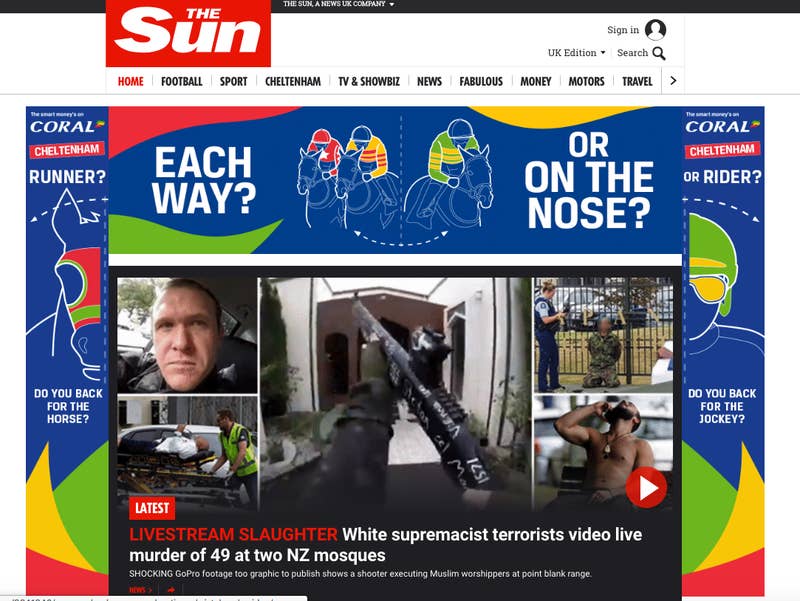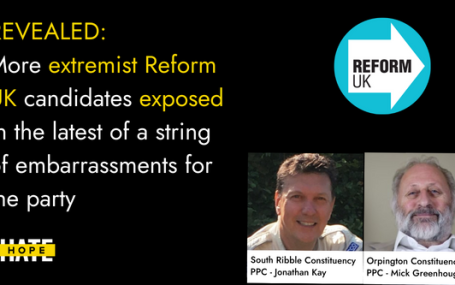HOPE not hate uses cookies to collect information and give you a more personalised experience on our site. You can find more information in our privacy policy. To agree to this, please click accept.
It’s too early to tell exactly how the Christchurch killer developed his world view and what factors ultimately caused him to act, but the numerous ideologies referenced and language used indicate clearly that he developed his worldview online, writing himself that “you will not find the truth anywhere else” other than the internet.
Moreover, his manifesto, as well as the far-right keywords graffitied onto his weapons, function as gateways to those same online environments. He directly and indirectly encouraged others to do what he did, aiming to be a catalyst the same way he himself had been inspired by far-right terrorists in Europe and North America.
Far-right terrorists integrating something akin to a social media strategy into their attacks has become commonplace. Elliot Rodgers, for example, who killed seven people in California in 2014, published several videos, including one right before his attack, outlining his motivations. More recently, the far-right extremist who opened fire in a synagogue in Pittsburgh in October 2018 similarly announced his attack shortly before on the social media platform Gab. In the case of Christchurch, in part because of the sheer scale of the attack itself but also due to the mass spreading of the video and attacker’s manifesto (which included numerous language and symbols common in far-right communities online), the problem of encouraging hate was made particularly salient.
YouTube has stated that, at one point, more than one copy of the video was uploaded on the platform every second after the attack and a blog post by Facebook reported that 200 people watched the live stream as the attack unfolded. Yet, social media platforms have yet to find a way to counter the spread of hate on their platforms. None of the 200 people that watched the shooting live reported it to Facebook and copies of the video kept reappearing across all the larger social media platforms. Facebook reported that they removed 1.5 million videos of the attack.
The sheer speed of the spread of the video and the many different sites it was published on, including giants like YouTube, Facebook and Twitter but also on far-right forums and over the torrent file-sharing network, sadly demonstrates how some are attracted to gruesome videos. Yet, it’s also an indication of how diffuse, international and dynamic the far-right movement is online. Despite largely lacking a formalised or hierarchical organisational structure, its supporters are able to quickly assemble and work collaboratively while remaining anonymous behind their screens. Even if most are unlikely to have direct connection to Tarrant, in editing the video so as to circumvent efforts by the social media platforms to remove it, and in sharing the manifesto and producing memes to spread its ideas, the online far right played a vital role in realising part of the motivation of his crime.
A particularly clear example of this came from far-right forum Kiwifarms which became one of the primary hubs to spread the video, refusing to stop it being shared on the site and refusing to aid the police in their investigation into Tarrant. The forum’s founder published a response stating:
“You’re a small, irrelevant island nation barely more recognizable than any other nameless pacific sovereignty. You do not have the clout to eradicate a video from the Internet and you do not have the legal reach to imprison everyone whose [sic] posted it”
Copycat attacks are common after terror incidents, which act as trigger events for similar (and in some cases, reciprocal) attacks. This was also the case with the Christchurch shooting. In the week after the attack five mosques in Birmingham were targeted in a string of violent attacks. Seven people have also been arrested for anti-Muslim hate crimes in Greater Manchester and anti-Muslim hate crime rose by 593 percent in the UK.

It’s important to understand that far-right terror doesn’t end when the last bullet has been fired. The ensuing media coverage and virally replicated memes are also often part of the perpetrators plan to sow division and hatred. Media outlets, including social media platforms, therefore need to take greater care in how and what they publish in order not to amplify an attackers ideas or in any other way contribute to an increased likelihood of other forms of violence.
How to report on far-right terror presents several different, sometimes complicated problems. Several outlets through their reporting played into the hands of the perpetrator. In the UK, the Daily Mail made the manifesto available to download for its readers and other tabloids showed parts of the video, contributing to the amplification of Tarrant’s message. Sky News Australia also played the footage on television leading a New Zealand broadcaster to stop airing the channel.
Joan Donovan, writing in The Atlantic, reminded us that in the US in the 1960s, some reporters avoided covering white supremacist groups, such as the Ku Klux Klan, in order to not unwittingly act as their mouthpieces. The technique, called ‘strategic silence’, was carried out with the hope that it would deny them the attention that they needed to recruit new members and grow their influence. There are several things to learn from this strategy today when it comes to the reporting of terrorism, including that the media should avoid covering gruesome details, as well as discussing the perpetrators ideas, as this can be interpreted as giving them legitimacy. Instead, they should focus on the victims and structural inequality.
However, as Donovan also points out, we now live in a society where access to information is dramatically easier. Even if coverage is responsible and non-sensational, people will know that more information is available online, on social media and other forums. Traditional media’s role as a gatekeeper has diminished.
It puts traditional media outlets in a difficult position. Knowing that more details are easily retrievable online anyway, and under debilitating financial pressure, journalists may give into the temptation to deliver explosive and emotive content which plays into the hands of terrorists. To give enough accurate information might be a more realistic compromise.
Indeed, avoiding explaining the motivations of the attacker, the terminology they use and their ideological origins also means that accurate information on that topic might be lacking. This effectively cedes the space where far-right ideas could be contextualised and critiqued to someone less competent or the far-right themselves, likely resulting in a much more favourable, and dangerous, take on violent ideas.
Lastly, it is important to remember that the issue of reactive reporting of terror events like the one in Christchurch is just one small part of a larger problem. The gunman was motivated by a conspiratorial worldview that perceives of Muslims as a threat and Islam as inherently incompatible with the West. Last year HOPE not hate produced a report on Islamophobia in which we highlighted how the organised ‘Counter Jihad’ movement is disappearing, not because Islamophobia itself is diminishing but because the wall between its views and those of the mainstream is crumbling. Today, anti-Muslim conspiratorial ideas and racism are expressed by mainstream politicians and printed by traditional media. In an open letter following the Christchurch attack Neil Basu, Head of Counter Terrorism Policing in the UK, argued that:
“[…] every terrorist we have dealt with has sought inspiration from the propaganda of others, and when they can’t find it on Facebook, YouTube, Telegram or Twitter they only have to turn on the TV, read the paper or go to one of a myriad of mainstream media websites”
While, for example, ISIS videos are rightly taken down from social media platforms very quickly through concerted efforts by social media platforms and are these days rarely published by traditional media, a similar consistency is not upheld with Islamophobic content. There is less consensus on what is considered unacceptable Islamophobic speech. It leads to inconsistent and sporadic bans on some social media platforms while Islamophobic rhetoric continues to be defended in both mainstream media and on social media platforms.
Ideas mobilised in the shooter’s manifesto are regularly espoused by elected politicians across Europe and in the USA and defended under the guise of free speech. It’s this existing spread of conspiratorial and Islamophobic ideas which enable shootings like the one in Christchurch and allows its perpetrator to predict and exploit the response to his attack.

HOPE not hate reveals two more extremist candidates from Reform UK, in the latest of a string of embarrassments for the party UPDATE: Just hours…